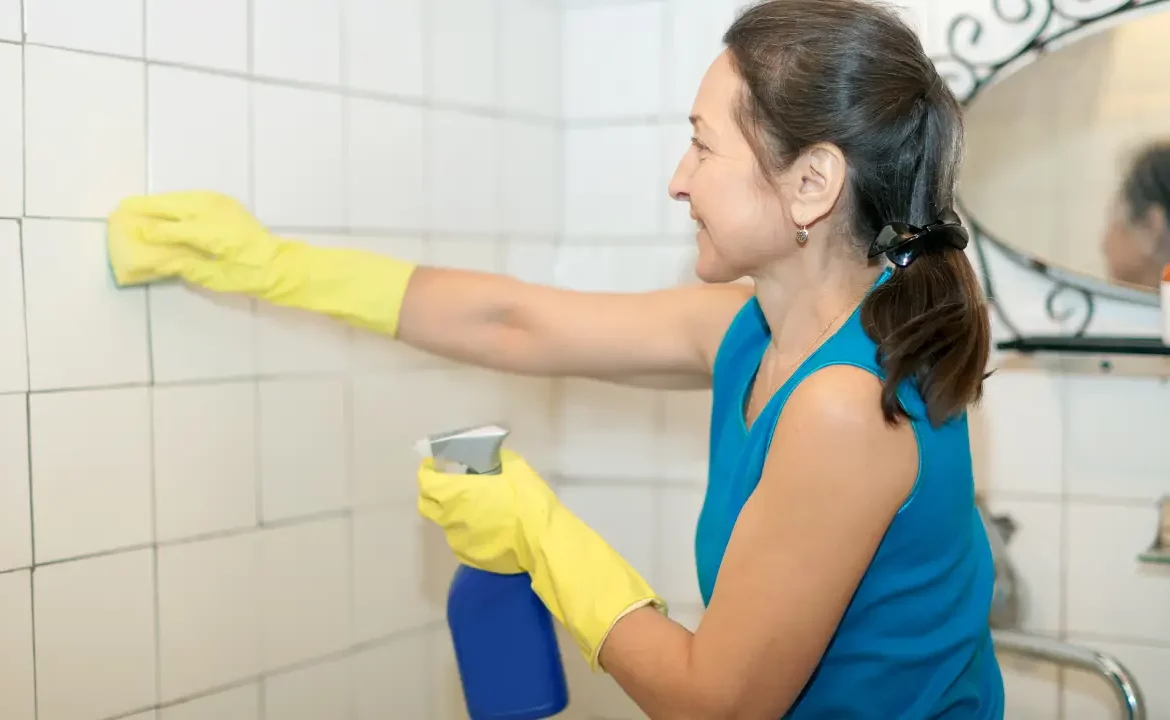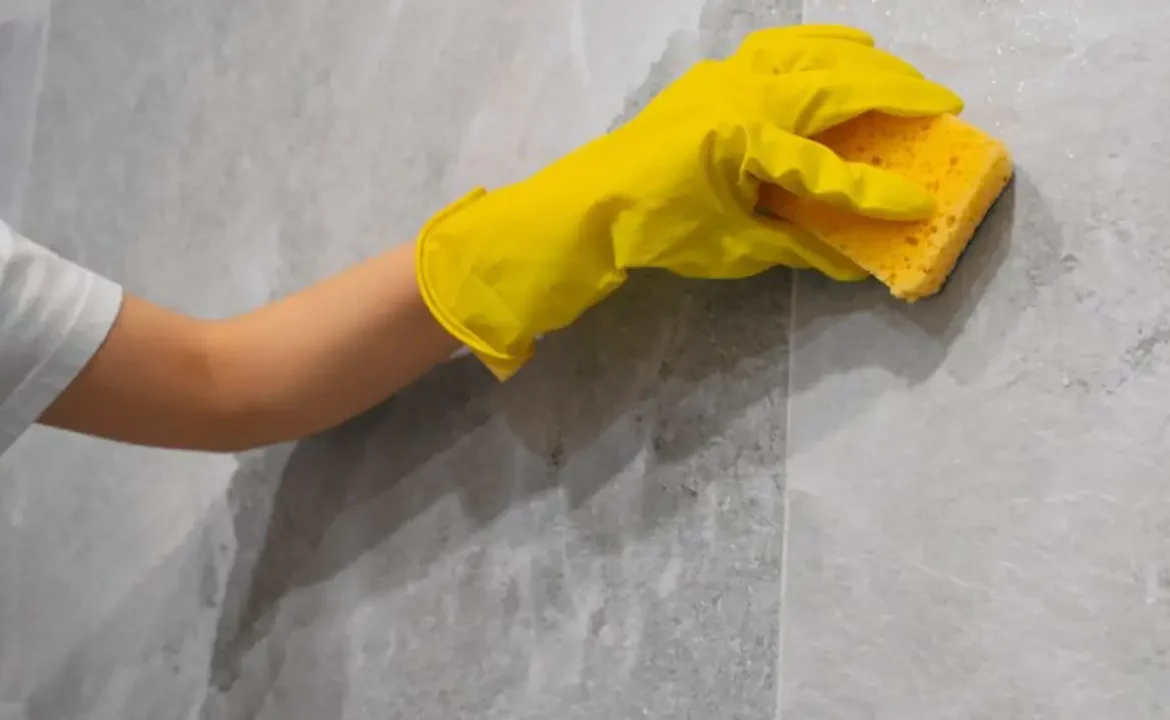When it comes to wall cleaning, it’s not a one-size-fits-all endeavor. To truly master the art of clean walls, you need to start by understanding the specific surface you’re dealing with. Whether it’s painted walls, wallpaper, or even wallpapered walls, each comes with its own set of challenges and considerations.
Painted Walls: These are the most common wall surfaces in homes, and the type of paint used matters. For latex paint, a damp sponge or soft cloth with warm water is usually all you need to wipe away dirt and smudges. But for more stubborn stains and scuff marks on painted walls, a little baking soda mixed with water can work wonders without damaging your paint job.
Wallpaper: Cleaning wallpapered walls can be a bit trickier. Avoid excess water, harsh chemicals, or abrasive scrubbing, as these can ruin the delicate patterns. Instead, use a clean sponge, preferably a damp one, to gently clean the surface. An eraser or a brush attachment on a vacuum cleaner can help remove dust and dirt from the seams and baseboards.
Gathering the Essential Wall Cleaning Tools and Solutions
Before you dive into the task of wall cleaning, it’s essential to assemble the right tools and solutions to ensure a successful cleaning job. The choices you make here can significantly impact the end result, so let’s explore the key elements you need:
The Cleaning Solution: There’s no one-size-fits-all solution for every type of wall, but you do have several options to consider. Whether you opt for a mild cleaning soap and water mixture or a more specialized wall cleaner, the key is to choose the one that suits your wall type and the level of grime you’re dealing with.
Choosing the Right Cleaner: For painted walls, a gentle cleaning solution made of a gallon of warm water and a cup of baking soda can work wonders. On the other hand, wallpapered walls may require a more delicate touch, and an inconspicuous area test with your chosen cleaner is a smart move to avoid any mishaps.
Equipment and Tools: Equip yourself with the necessary tools for the job. A clean sponge or cloth, a bucket of clean water, and a tack cloth to wipe off excess water are indispensable. A soft-bristle brush and a dry sponge can come in handy for stubborn stains or marks. Always start at the top of the wall and work your way down to avoid streaks.
Gathering the right cleaning tools and solutions is the foundation for effective wall cleaning. The choice of cleaner and equipment should be aligned with your wall type, ensuring that you’ll clean your walls without damaging them. In the following steps, we’ll show you how to put these tools to good use for a thorough and successful wall-cleaning experience.

How to Get Your Walls Ready for a Thorough Cleaning
Before you start washing your walls, you need to do some prep work. This will make the cleaning process easier and more effective. Here are some steps to follow:
Spot cleaning
How to address stains and scuffs. If you notice any marks on your walls, such as fingerprints, crayon marks, or food splatters, you should try to remove them as soon as possible. The longer they stay on the wall, the harder they will be to clean. You can use a damp cloth or sponge with some mild detergent or an all-purpose cleaner to gently rub the area. For stubborn stains, you can try a paste of baking soda and water or a stain remover product. Be careful not to scrub too hard or use abrasive cleaners, as they can damage the paint.
Dusting the walls
The importance of a clean canvas. Before you wash your walls, you should dust them first. This will remove any loose dirt, cobwebs, or dust mites that may be on the surface. You can use a microfiber cloth, a vacuum cleaner with a soft brush attachment, or a long-handled duster to reach the high and low areas of your walls. Dusting your walls will also prevent the dirt from spreading when you wet them.
Identifying the type of paint on your walls
Latex, oil-based, or other. Different types of paint require different cleaning methods. You should know whether your walls are painted with latex, oil-based, or other types of paint before you start washing them. You can do a simple test by rubbing a cotton ball soaked in rubbing alcohol on a hidden part of the wall. If the paint comes off, it is latex; if not, it is oil-based or another type. Latex paint is more water-resistant and easier to clean than oil-based paint, which can be damaged by water or harsh chemicals.
Safe ways to remove dust without causing damage
The best way to clean your walls without damaging them is to use a mild soap solution and a soft sponge or cloth. You should wring out the sponge or cloth well before applying it to the wall, as too much water can cause streaks or peeling. You should also rinse with a clean sponge or cloth and dry with a towel after washing each section of the wall. You should work from top to bottom and from left to right, overlapping slightly as you go. This will ensure that you don’t miss any spots or leave any marks on the wall.
The Step-by-Step Wall Cleaning Process
If you want to make your walls look fresh and clean, you need to follow a few simple steps. Here’s a guide on how to clean your walls effectively and safely.
Spot Cleaning Stains
Sometimes, you might notice some stains on your walls that need extra attention. To deal with them, you can use some dish soap and water to gently scrub the affected area. This works well for most common wall stains, such as dirt, grease, or fingerprints. If you have oil-based paint on your walls, you might need to use a stronger solvent, such as rubbing alcohol or vinegar. Be careful not to damage the paint by rubbing too hard or using too much product.
Cleaning Painted Walls
Painted walls are easy to clean if you use the right method. You should avoid using harsh chemicals or abrasive tools that can ruin the paint finish. Instead, use a soft sponge or cloth and a mild detergent solution to wipe down your walls. Start from the top and work your way down, using a circular motion. This will help you remove dust, dirt, and grime without leaving streaks or marks. To maintain the paint finish, you should clean your walls regularly and avoid touching them with dirty hands or objects.
Cleaning Wallpapered Walls
Wallpapered walls require special care when cleaning them. You should always follow the manufacturer’s instructions for the type of wallpaper you have. Some wallpapers are washable, while others are not. You should also test a small area before cleaning the entire wall to make sure the wallpaper won’t fade or peel off. To clean wallpapered walls, you can use a soft brush or vacuum to remove dust and cobwebs. Then, you can use a damp cloth or sponge and a mild soap solution to gently wipe the surface. Be careful not to soak the wallpaper or rub it too hard. You should also avoid using any products that contain bleach, ammonia, or alcohol.
Applying a Cleaning Solution
Before you apply any cleaning solution to your walls, you should prepare it properly. You should always dilute the cleaning product with water according to the label directions. You should also wear gloves and protective eyewear to avoid skin irritation or eye damage. To apply the cleaning solution, you can use a spray bottle a bucket, and a sponge. Spray or dip the sponge in the solution and wring out the excess liquid. Then, apply it to the wall in small sections, starting from the top and working your way down.
Rinsing and Final Touches
After you have cleaned your walls with the cleaning solution, you should rinse them thoroughly with clean water. This will help you remove any residue or soap scum that might affect the appearance of your walls. You can use a clean sponge or cloth and fresh water to rinse your walls, following the same pattern as before. Then, you can use a dry towel or cloth to wipe off any excess moisture and prevent mold growth. For the final touches, you can use a magic eraser or a cotton swab dipped in alcohol to remove any stubborn scuffs or marks that remain on your walls. You should also check for any spots that need touch-ups with paint or wallpaper glue.

Additional Tips for Keeping Your Walls Clean
Maintaining clean walls is not a one-time effort but an ongoing practice that can extend the life and beauty of your interior spaces. Here are some extra tips to help you keep your walls looking pristine:
Regular Maintenance: Incorporate a routine of regular wall cleaning to prevent the buildup of stains and scuffs. By dusting your walls using a dry sponge or an all-purpose cleaner, you can keep them free from everyday dirt and grime.
Ventilation and Air Quality: Adequate ventilation plays a vital role in wall cleanliness. Proper airflow helps minimize the accumulation of pollutants, which can lead to stains on painted walls. Good air quality contributes to a healthier living environment and cleaner walls.
Eco-Friendly Cleaning: Consider using eco-friendly cleaning options for a greener approach. Water-based cleaning solutions and natural cleaning agents can effectively clean your walls without harming the environment.
Conclusion and Wall Cleaning Made Easy
- Summarizing the key takeaways for clean and well-maintained walls
- Encouraging readers to put these wall-cleaning tips and tricks into practice for a fresh living space

Guia Sanchez, a versatile writer and dedicated content creator, weaves creativity seamlessly across social media platforms. With a passion for storytelling, she excels in crafting compelling content that resonates deeply. Guia has extended her expertise to become an authority in house cleaning services, combining her literary prowess with practical know-how.
